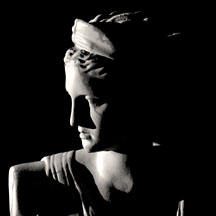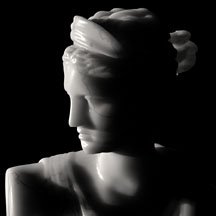Cornell computer scientist will receive Technical Achievement Award from the Academy of Motion Picture Arts and Sciences
By Bill Steele


A Cornell professor will share in a Technical Achievement Award from the Academy of Motion Picture Arts and Sciences for a significant advance in the realism of computer graphics and animation.
Stephen Marschner, assistant professor of computer science at Cornell, is a co-developer, with two faculty members at Stanford University, of a method for simulating the subsurface scattering of light in translucent materials. Translucent materials range from marble to human skin. The method has been adopted by several commercial animation studios and is most notably seen in the character Gollum in "The Lord of the Rings" trilogy.
The technical achievement awards are part of the 76th annual Academy Awards, but they are presented separately from the televised ceremony and will be mentioned during the telecast. Marschner and his colleagues, Henrik Wann Jensen and Pat Hanrahan, will receive their awards at a black-tie ceremony in Pasadena, Calif., Feb. 14. The award is presented in the form of a certificate, not an Oscar statuette.
"One of the things that surprised us was how many materials are translucent," Marschner recalls. "Just about anything except metal, in fact." Among others are marble, cloth, paper, skin, milk, cheese, bread, meat, fruits, plants, fish, ocean water and snow. When light strikes such surfaces, some of it is reflected directly, but some also penetrates, is reflected underneath and returns, being scattered in the process. Computer methods that simulate only the reflection from the surface produce a hard, metallic effect.
Marschner noticed this while working on the Michelangelo Project at Stanford, which involves 3D scanning of the sculptures and architecture of Michelangelo. A computer rendering that assumes all light reflects from the surface makes a statue look like plaster, but adding translucency makes it look like marble. The research team's major contribution was to develop a mathematical method that allows simulation of translucency without requiring excessive computer processing time.
The work has applications beyond computer animation, including medical applications of laser scanning.
Marschner received his Ph.D. in computer science at Cornell in 1998 then worked as a post-doctoral researcher at Microsoft HP Laboratories and Stanford before returning to join the Cornell faculty in 2002. He now works with the Program of Computer Graphics at Cornell on other graphics techniques related to the realistic simulation of human beings, particularly the rendering of human hair.
The original paper, "A Practical Model for Subsurface Light Transport," was published in Proceedings of SIGGRAPH 2001.
Media Contact
Get Cornell news delivered right to your inbox.
Subscribe